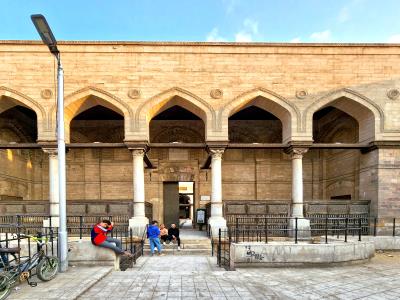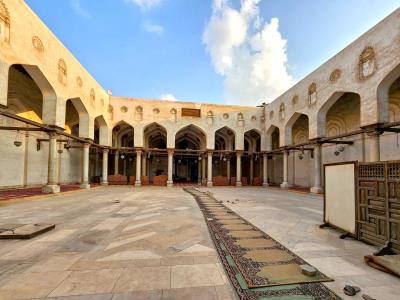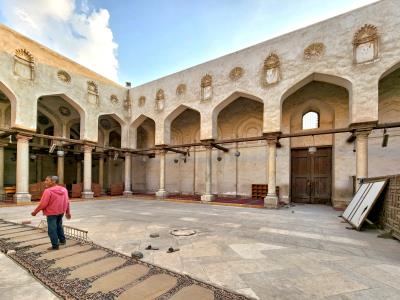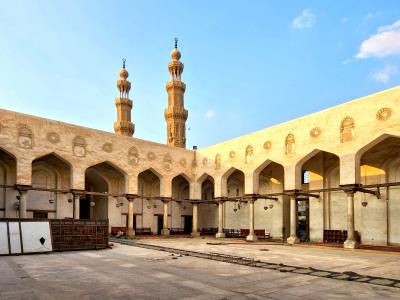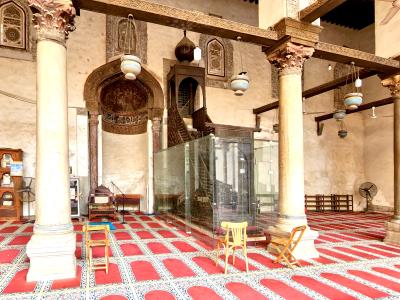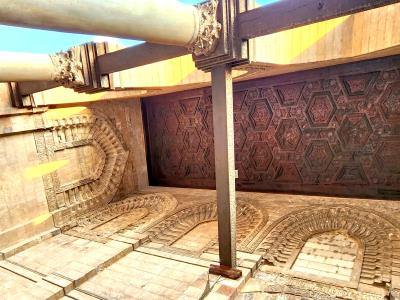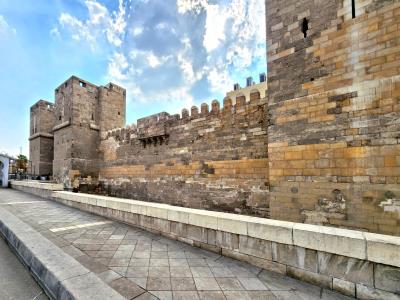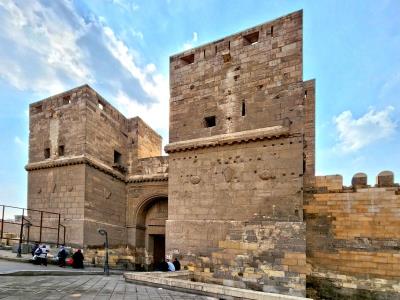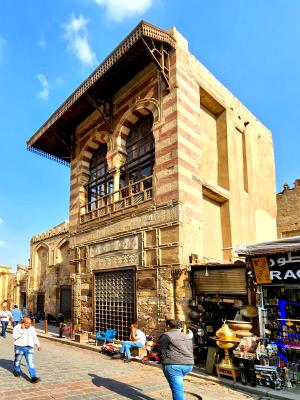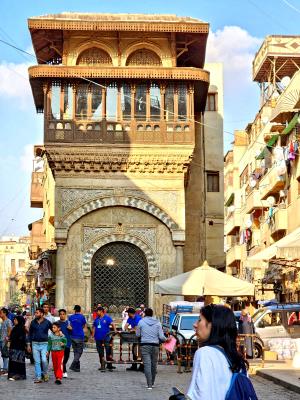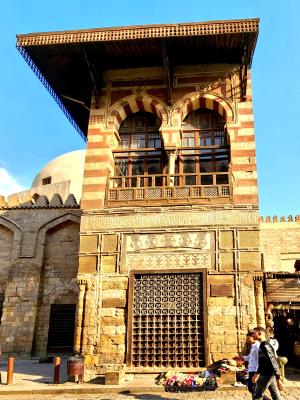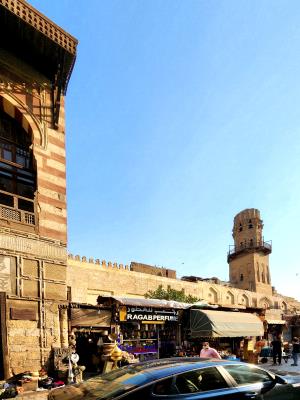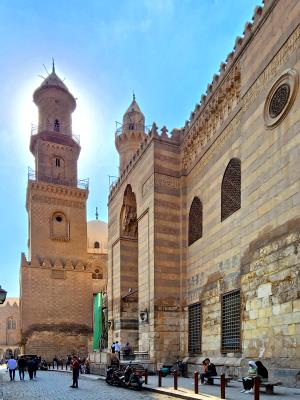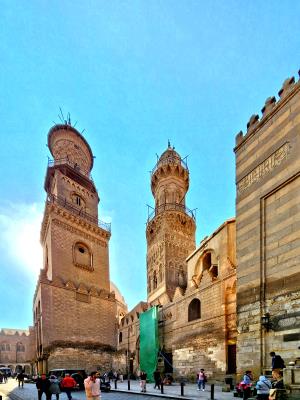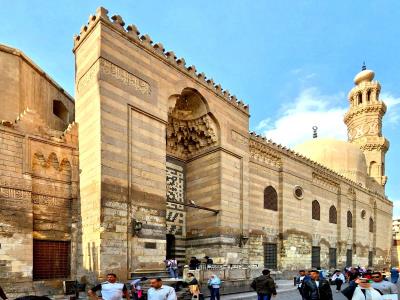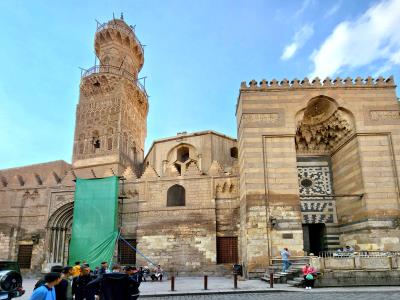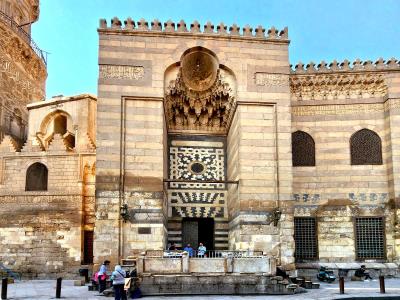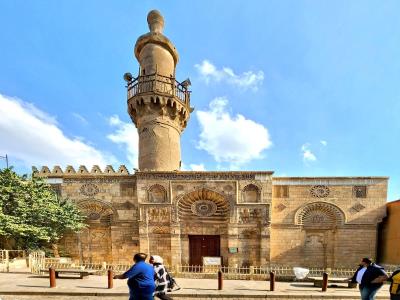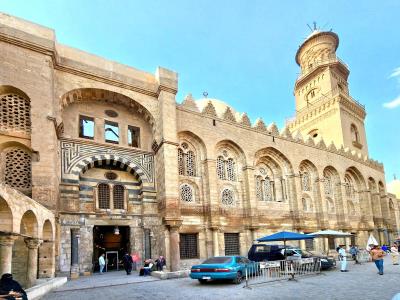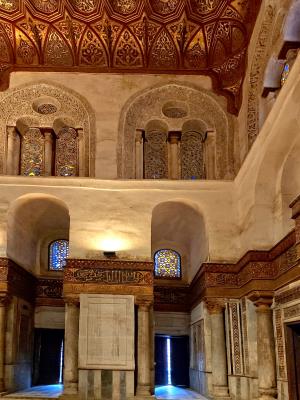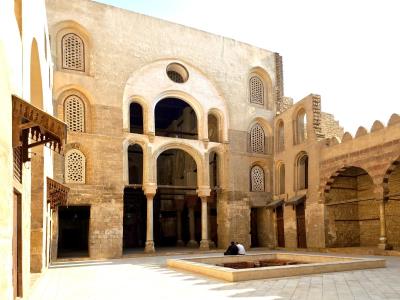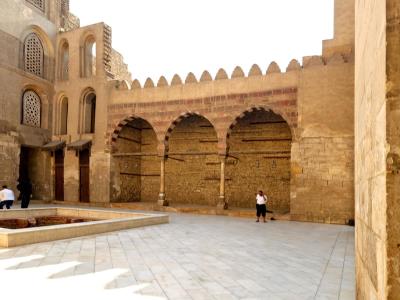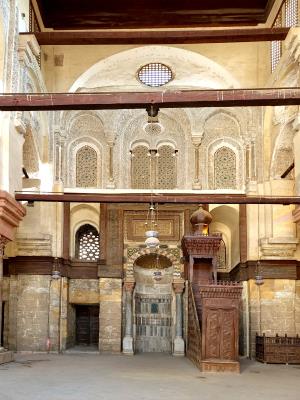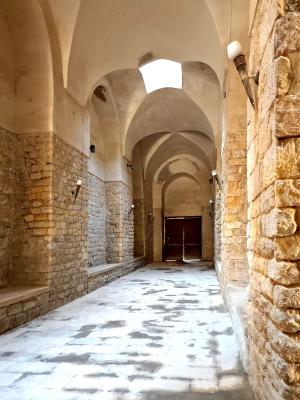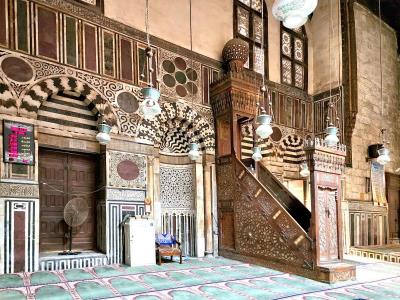Day 12 11/13/22
Egypt - Cairo
Frank's Trip
CLICK on any image to enlarge - use mouse cursor to move enlargement it if doesn't fit area
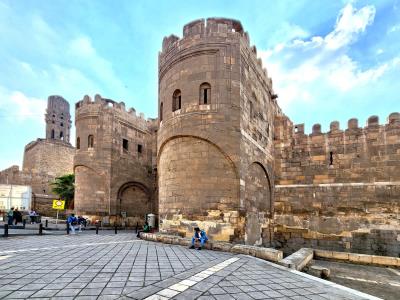
The concentrated historic Islamic street of Cairo...
Today was a very long walk dow a relatively short street. There is so much to see... and I doubt I saw more than half of it. This is a confusing street - the maps I had and Google Maps were helpful, but certainly not definitive. Many places are open to tourists, but one needs a ticket to go in and the ticket must be purchased from a central mosque half way down the street - after getting the ticket one must retrace the journey to see the places missed on the way to get the ticket.
 Al-Mu'izz Street / Al Moez Street
Al-Mu'izz Street / Al Moez Street
This was the main street of Cairo in the 11th century. Al-Mu’izz Street is named after the Fatimid Caliph, al-Mu’izz li-Din Allah (953–975 AD), who first founded this street. Today, it is the largest open-air museum for Islamic monuments in the world, and a unique heritage site that was added to The UNESCO World Heritage List in 1979. The street has borne many names over the centuries, and came to be known as al-Mu’izz only in 1937.
The historical street stretches between two of the gates of Cairo’s old city walls, from Bab al-Futuh in the north to Bab Zuwayla in the south, passing along many of the significant and uniquely preserved ancient alleys and streets.
Gates and Wall of Old Cairo
These remaining gates and sections of wall are among the rare remaining examples of military architecture in the Islamic world prior to the Crusades.
Bab al-Futuh and Bab al-Nasr are near one another so they are pictured here together and parts of the wall between and beyond them
Bab Zuwaula is also shown here even though it is a distance away at the other end of Al-Mu'izz Street
Bab al-Futuh
Gate of Conquests / Gate of Prosperity on the north wall. Built in 1087 AD. It opens onto historic al-Mu'izz Street
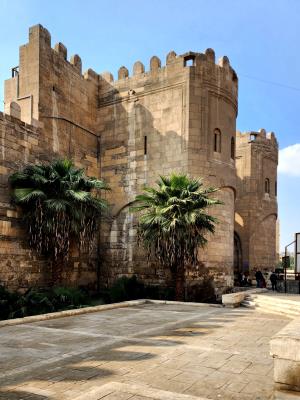
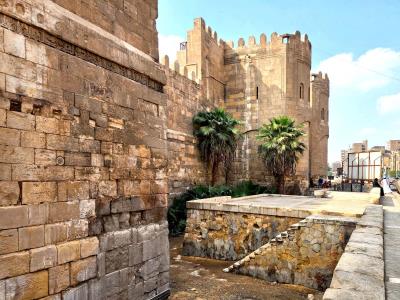

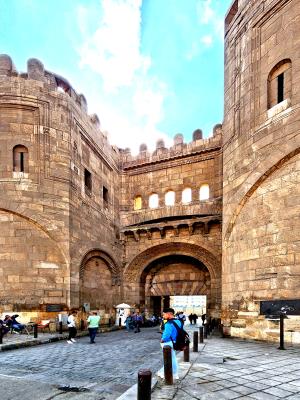
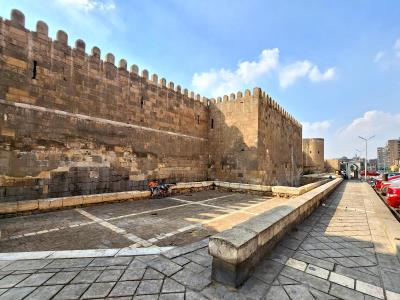
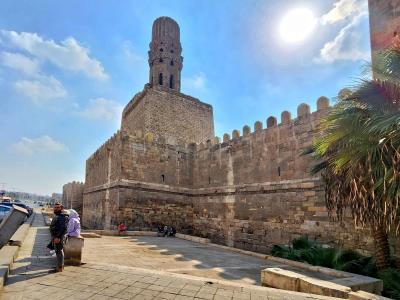
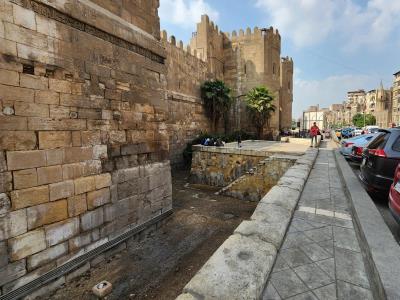
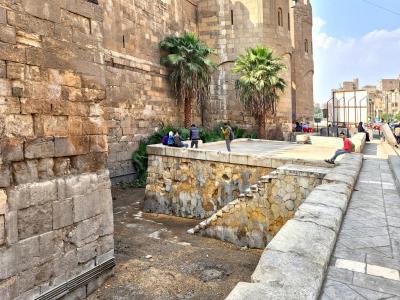
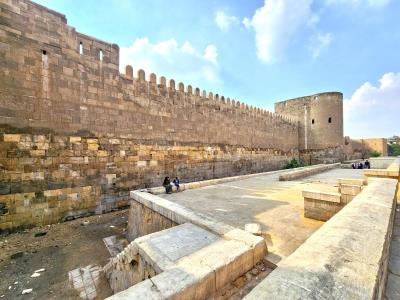
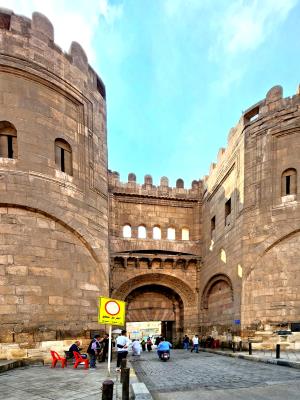
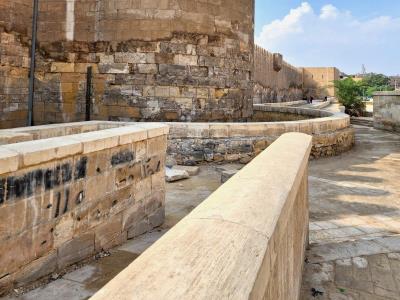
Bab al-Nasr
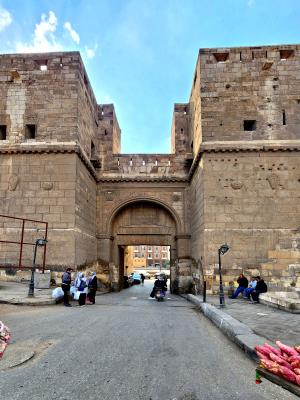
Victory Gate on the north wall. Built in 1087 AD
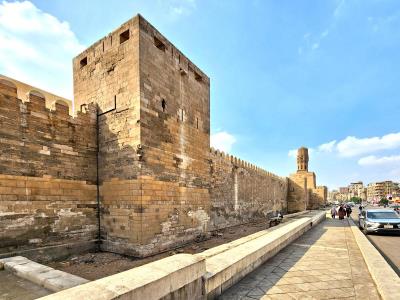
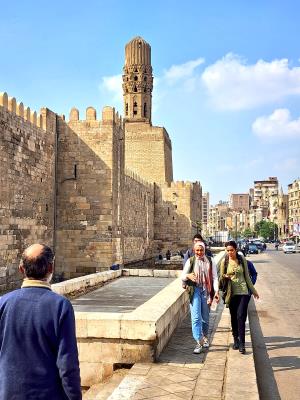
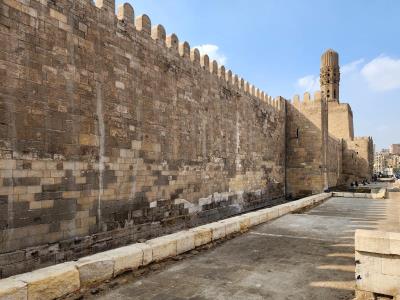
Bab Zuwayla
Built in 1092 at the opposite end of al-Mu'izz Street from the Bal al-Futuh and Bab al-Nasr gates.
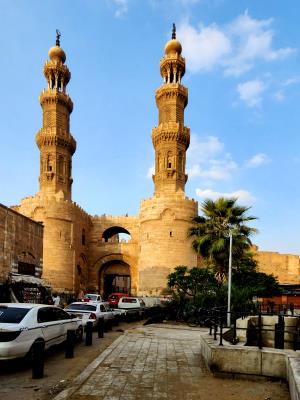
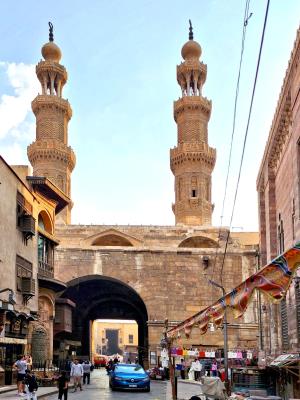
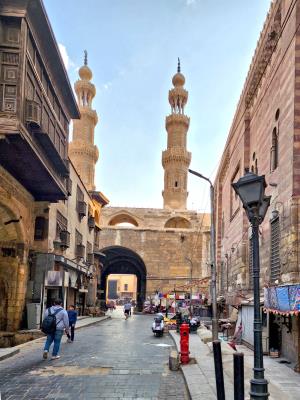
Al-Hakim Mosque
Opened in 1013 AD.This large mosque and grounds is at the top of Al-Mu'izz Street and runs the distance between Bab al-Futuh and Bab al-Nasr
Unfortunately, not open when I was there.
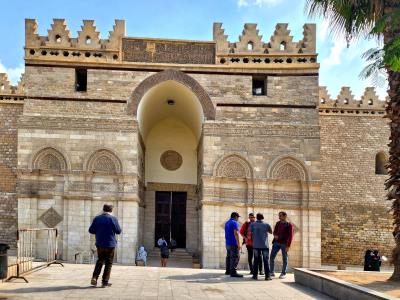
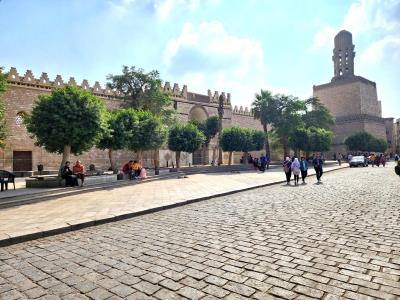
Sabil Sulayman Agha Al-Silahdar
A Sabil is a public fountain. Sabil-Mosque of Sulayman Al-Silahdar. The monument contains an architectural group, including a mosque, "Kuttab" and "Sabil" in a single building connected to each other.
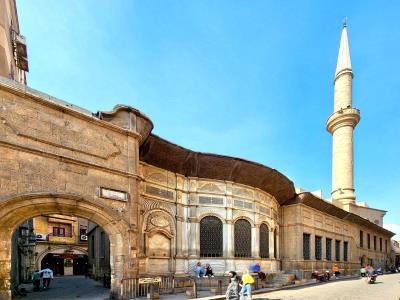
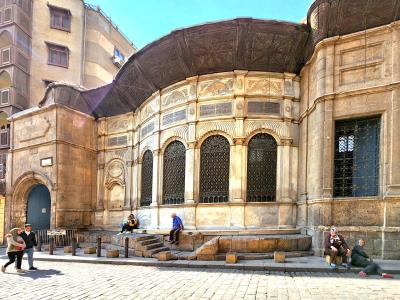
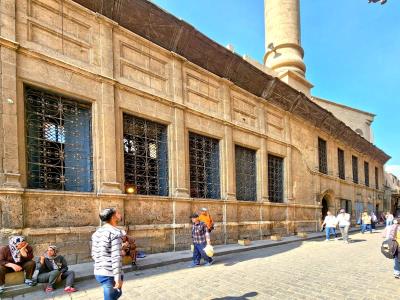
Street Scenes on Al-Mu'izz Street
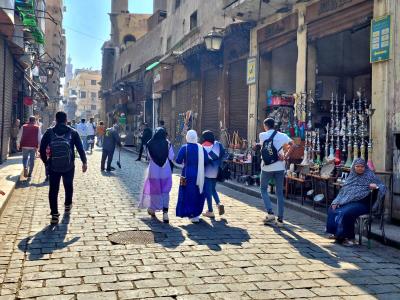
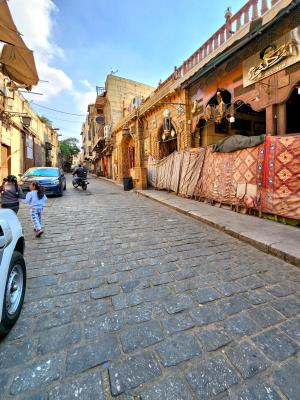
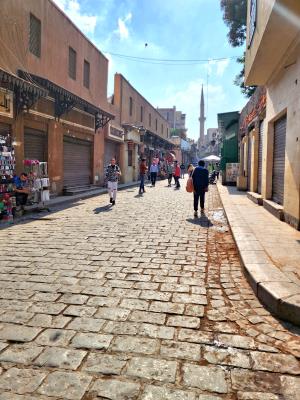
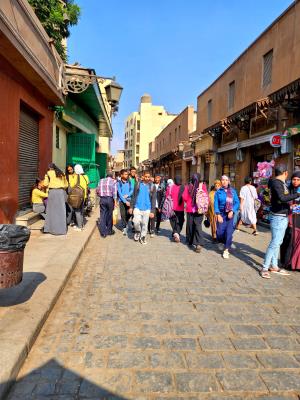
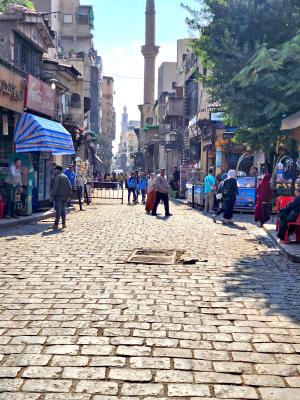
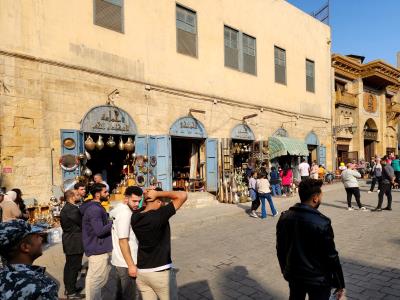
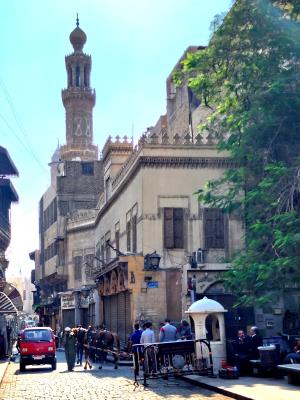
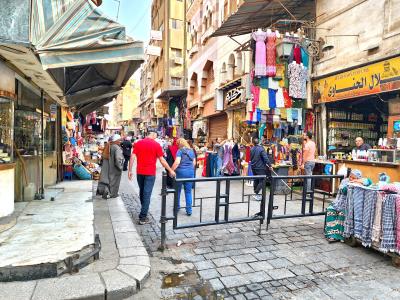
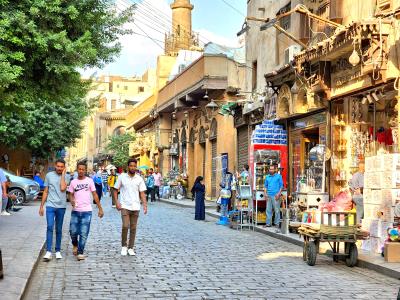
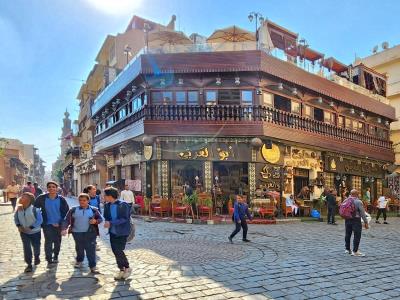
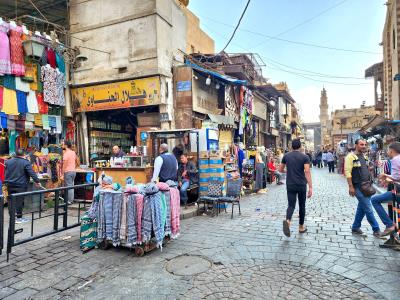
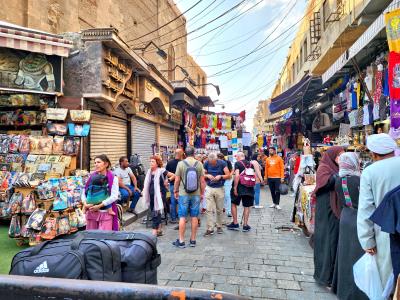
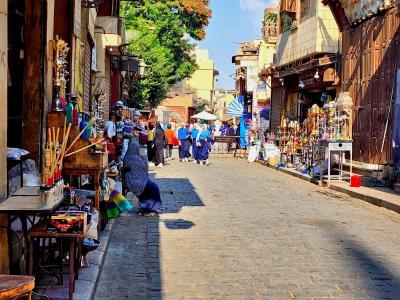
Sabil and Kotab Khesro Basha
1535 AD The Khesru Sabil consists of an underground building for storing water, and directly above it, another building distributes this water to passers-by. The upper floor was used for memorizing the Noble Qur’an as an ongoing charity also, like the water of the Sabil. This was similar to modern schools in which young people receive the first principles of education such as reading, writing and memorizing the Noble Qur’an. The Islamic nations were the first in providing a form of group education for children, unlike Europe, which was adopting individual education at that time.
Mausoleum of As-Saleh Nagm Ad-din Ayyub
also showing the Dome of Sultan Najm al-Din Ayyub
Built in 1247, Salihiyya Madrasa was a historic madrasa and mausoleum complex in Cairo, Egypt. The complex was founded by the Ayyub sultan As-Salih Ayyub in 1242 and his mausoleum was added to it by Shajarr ad-Durr upon his death in 1249. It was one of the most prominent centers of Islamic learning in the Ayyubid and Mamluk era in the 13th–14th centuries AD. Its remains are located on al-Muizz Street in the historic district of Cairo
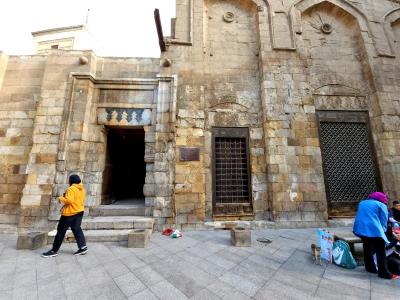
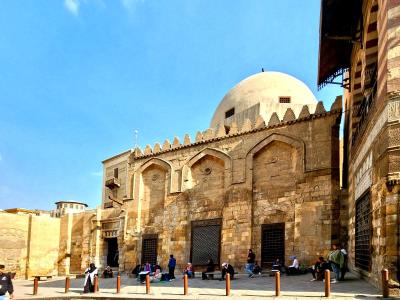
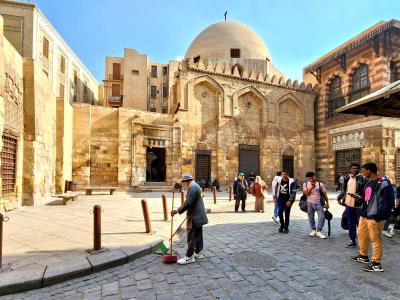
Madrassa of al-Zahir Baybars
This is the final remains of the madrasa of al-Zahir Baybars which was built in 1263 AD. The Madrasa of Baybars existed until 1874, when it was destroyed to make way for a road from Suq al-Nahhasin to Maydan Bayt al-Qadi. In 1882 the minaret fell. All that survives today is the block of stones that was once the lower part of the west corner.
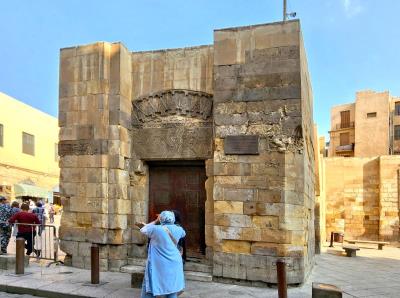
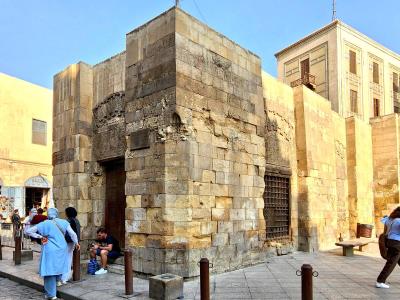
Sabil-Kuttab Ismail Pasha
1828
This Sabil or cold water fountain was established by Ismail Pasha who was the youngest son of Mohammad Ali celebrating his first marriage. The Sabil appears as a one-story building on the side if the street. There is a Kuttab next to the Sabil and it was dedicated to studying Quran and prophetic instructions.
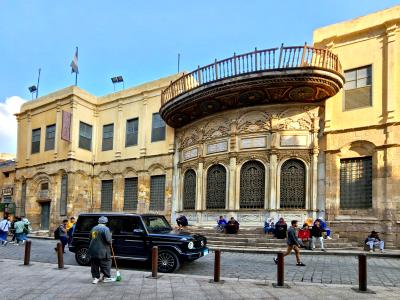
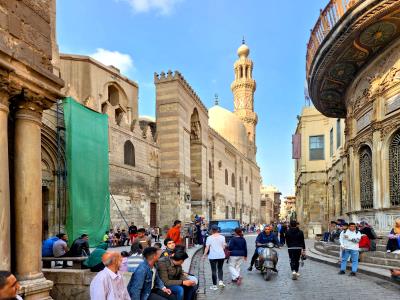
Mosque / Madrasa of Sultan al-Zahir Barquq
Upon the orders of Al-Zahir Barquq, the mosque was built in 1384-1386 as one religious complex. It entails a mosque, a school, and a mausoleum. All were subtly designed to remain as a witness for the grandeur of architecture surviving over hundreds of years.
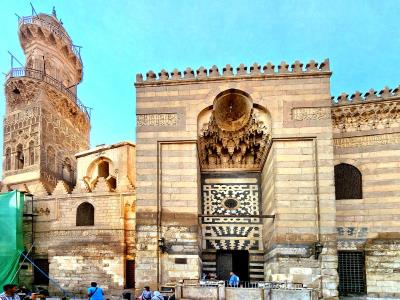
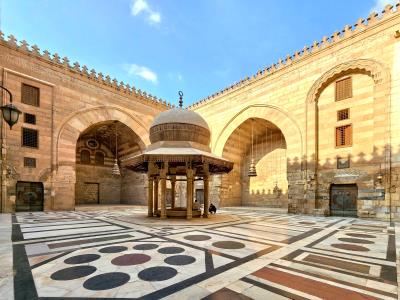
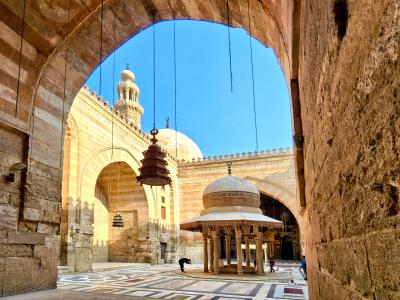
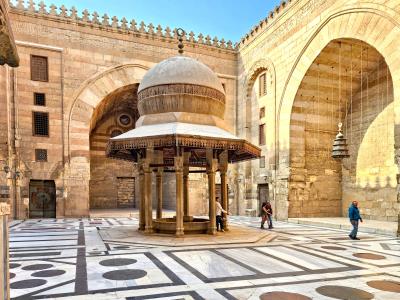
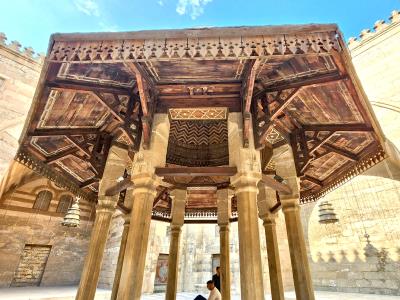
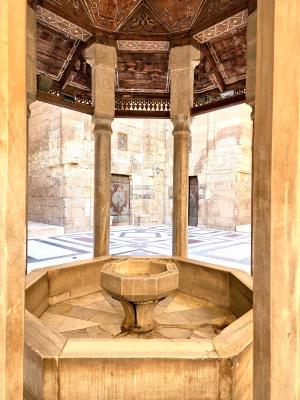
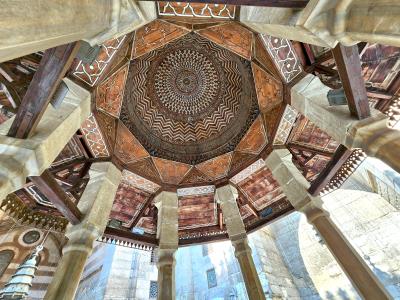
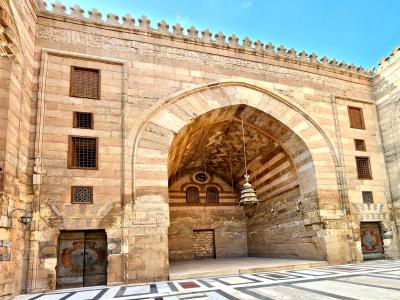
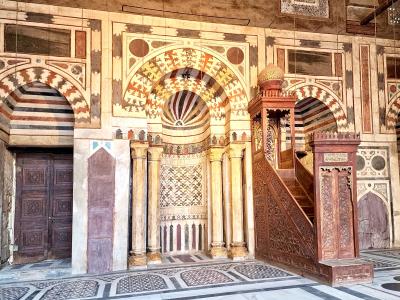
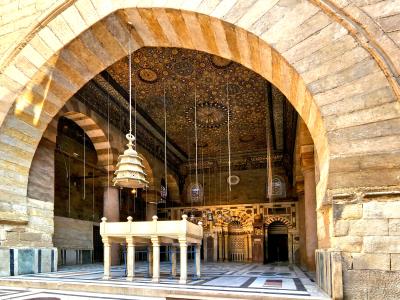
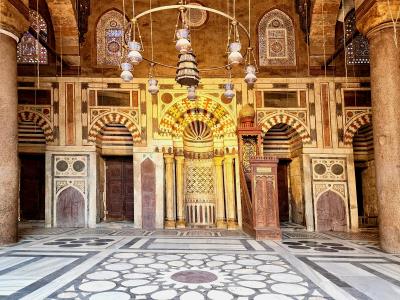
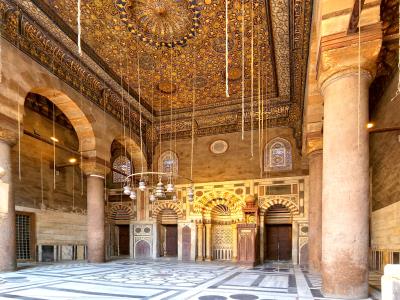
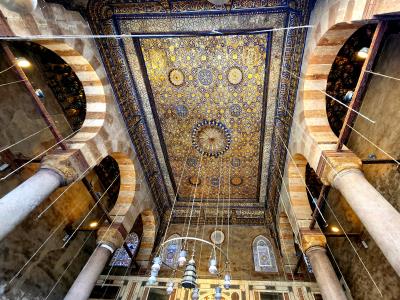
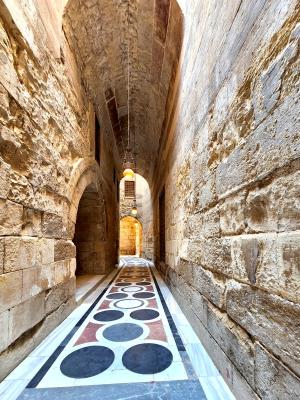
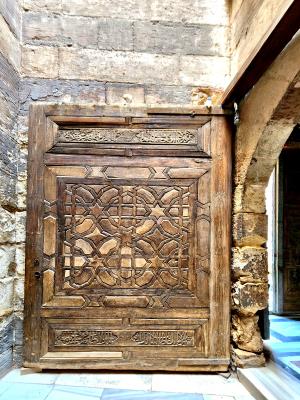
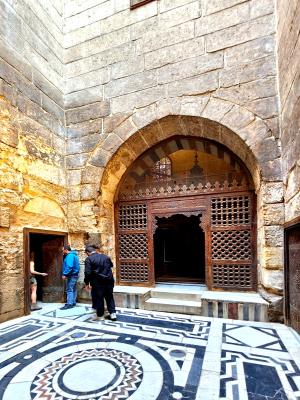
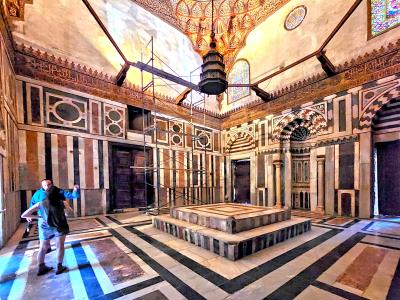
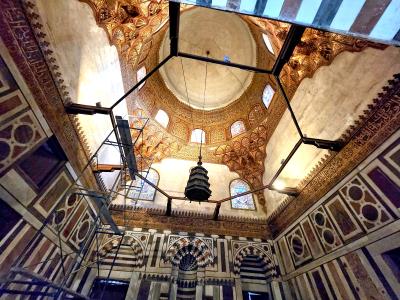
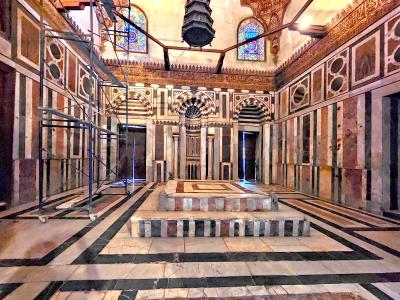
Al Aqmar Mosque
Al-Aqmar Mosque, or the Moonlight Mosque, has several unique architectural features. It was the first mosque in Cairo to use an offset facade - allowing the facade to remain square to the street front, while the rest of the building sits at an angle, aligning with the qibla, the direction of prayer toward Mecca. Al Aqmar mosque was built during the Fatimid period in 1125 AD
Unfortunately, this was one of a number of places that could be seen only from the outside.
Complex of Sultan al-Mansur Qalawun
The Qalawun Complex was completed in 1293 by Qalaun's son, Muhammad al-Nasir, and has an interior packed to the brim with intricate tile work, fine marble, mother-of-pearl mosaics, and stained-glass windows. Qalaun's madrassa also functioned as a hospital when it first opened.
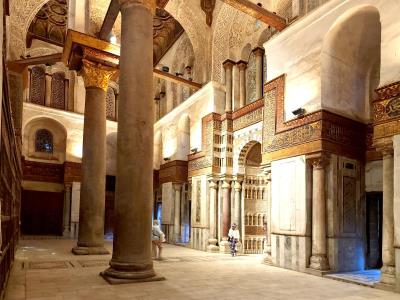
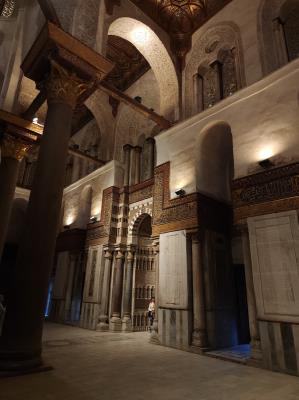
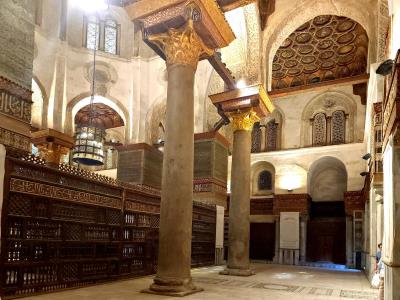
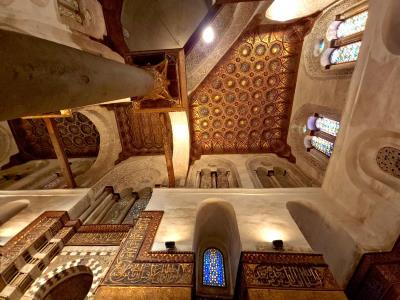
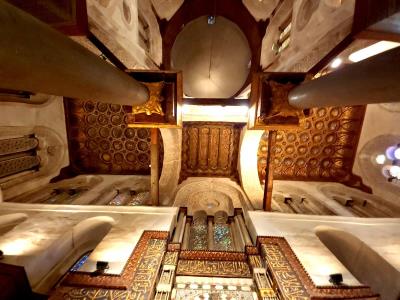
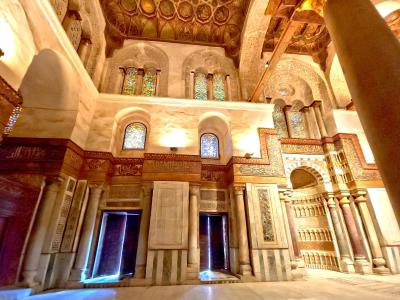
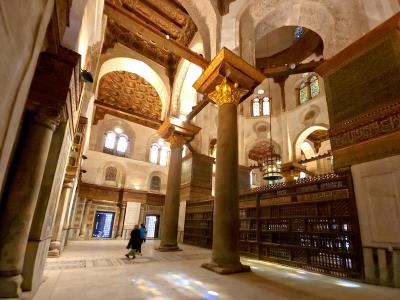
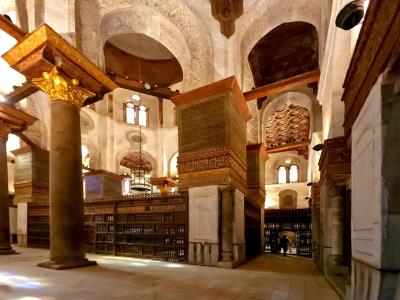
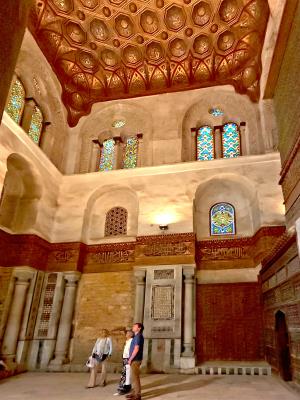
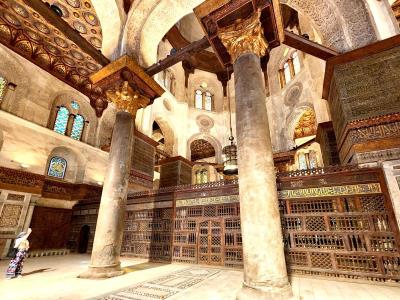
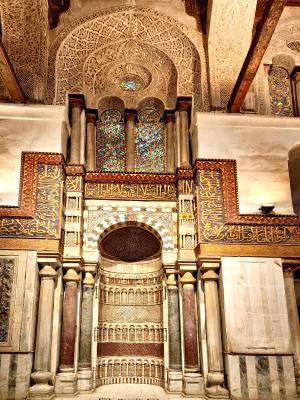
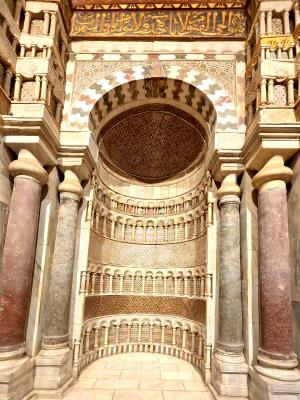
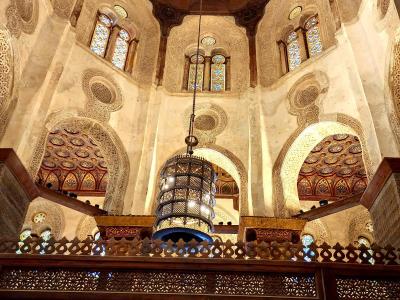
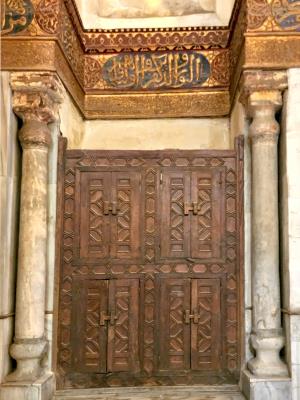
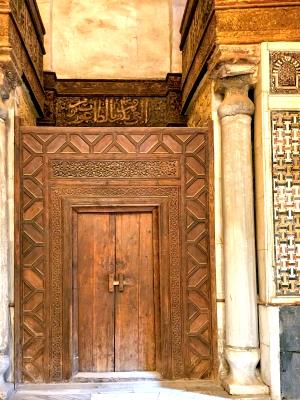
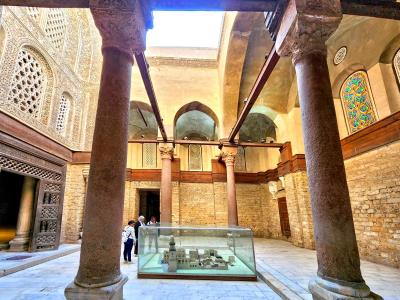
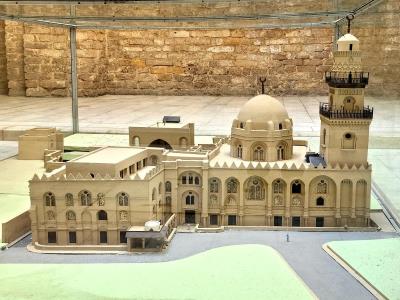
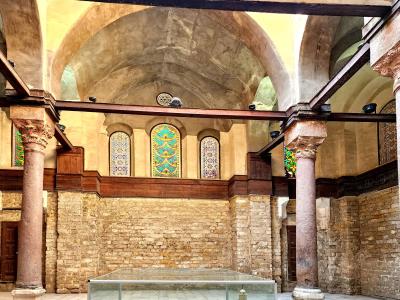
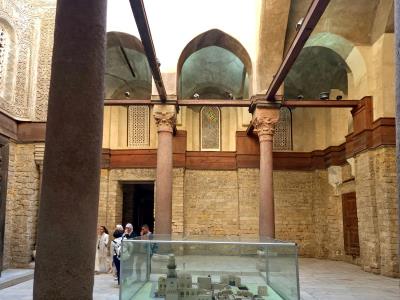
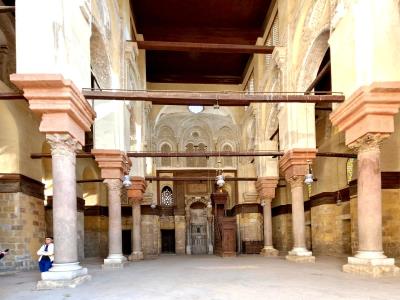
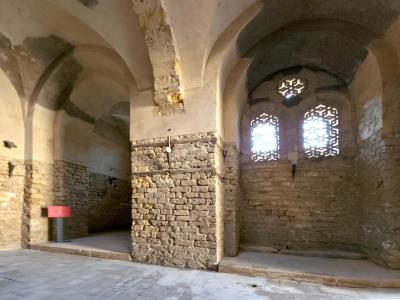
Videos: Mosque of Qalawun
Short videos inside the mosque
Click [ ] icon for full screen
Mosque of Sultan Al-Ashraf Barsbay
The mosque complex was built by Barsbay, the Circassian sultan who ruled the Mamluk Empire from 1422 to 1438 and construction of the mosque began in 1424 AD. Much of the original complex has since been destroyed.
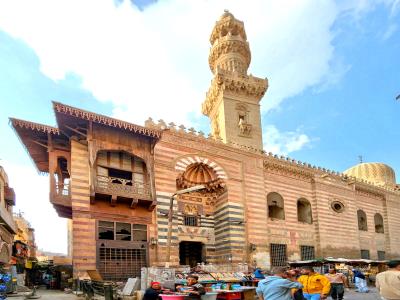
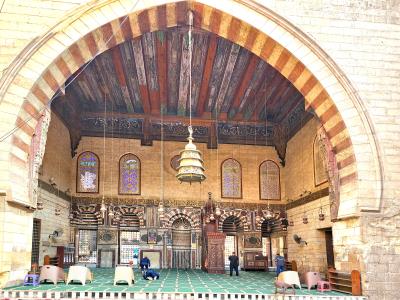
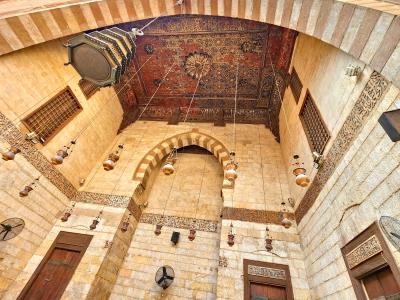
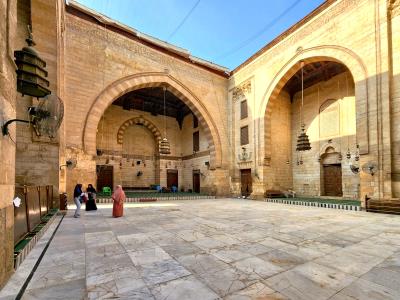
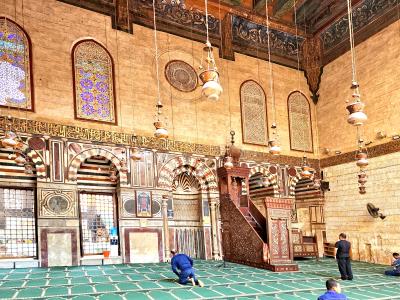
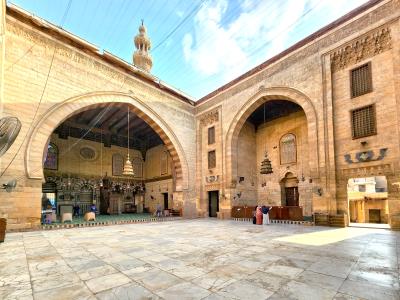
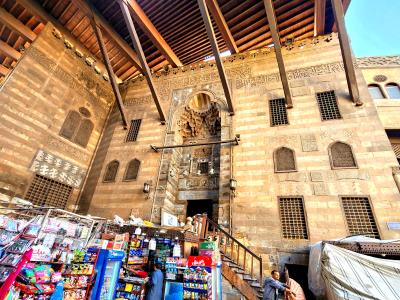
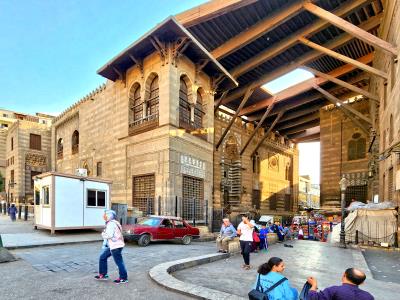
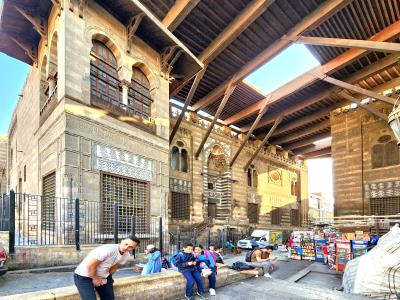
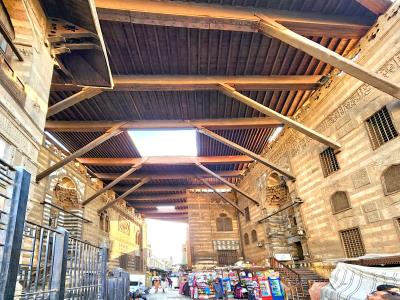
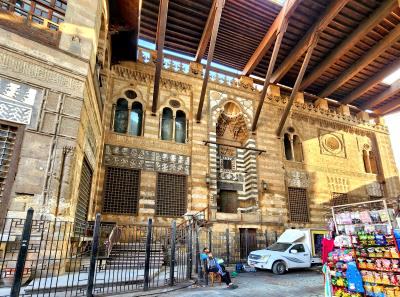
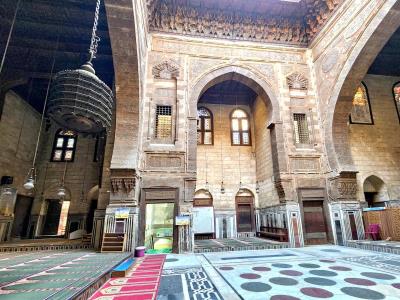
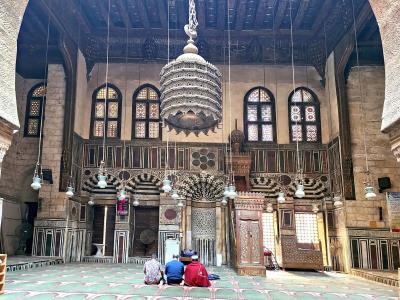
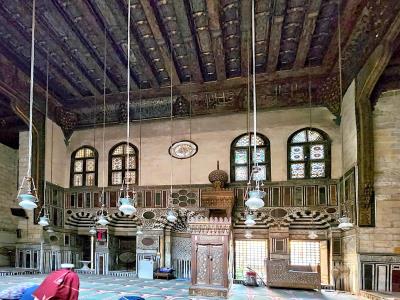
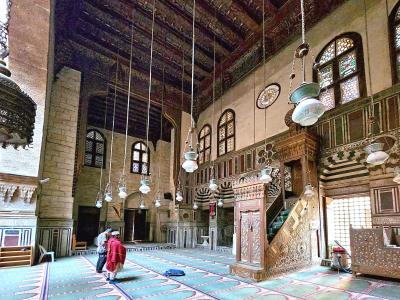
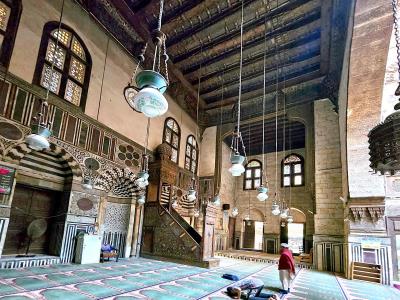
Sabil Muhammad Ali Pasha
Sabil of Muhammad Ali Pasha in Cairo is a public fountain built in 1820 and is 1 of 2 built for the deceased sons of Muhammad Ali - Tusun - who died in 1816. It offered free drinking water to public when water supply in private houses wasn't available in those days. This building is very unique and it is one of the first in Cairo which was built on the Ottoman architectural style. The gilded window grills, the motifs of the painted carvings on wood and bronze door were one of many fine examples of the Ottoman building style.
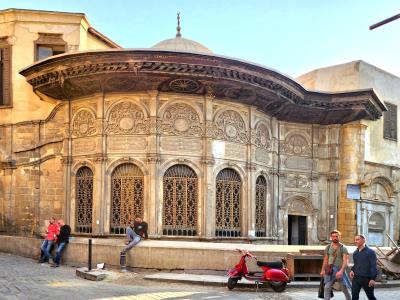
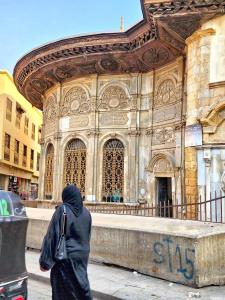
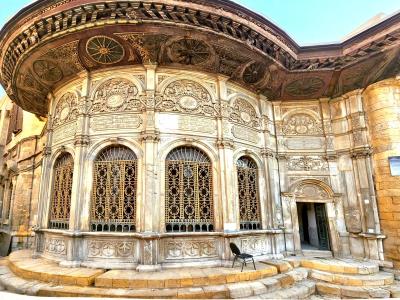
The mosque was characterized by its unique construction, whereby its two minarets were built over another monument, Bab Zuweila (city gate near top of this page), which dates to the Fatimid period and is adjacent to the mosque. Together, they formed a wonderful architectural unit.
The mosque was built in the Circassian Mamluk era in 1415 AD and one of the most important historical and heritage Islamic mosques in Cairo. The mosque itself consists of a main open courtyard surrounded by four canopies, the largest of which is the positioned towards qibla (prayer direction). The walls are paneled with marble and the wooden pulpit is inlayed with ivory and mother of pearl. The inscriptions on it give the name and titles of Sultan al-Mu’yyad.

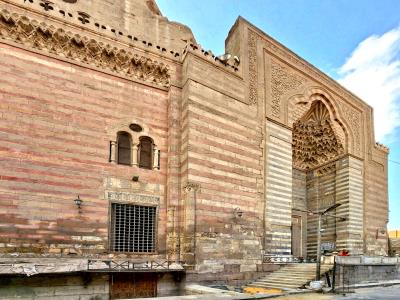
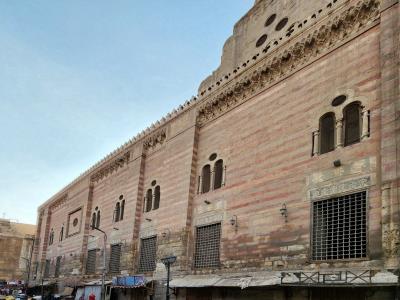
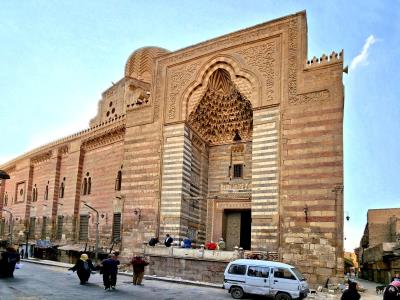
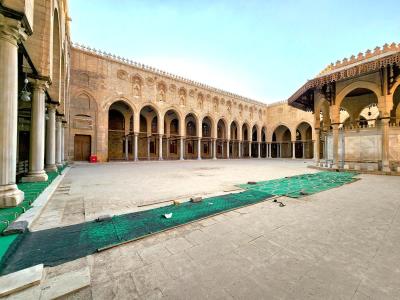
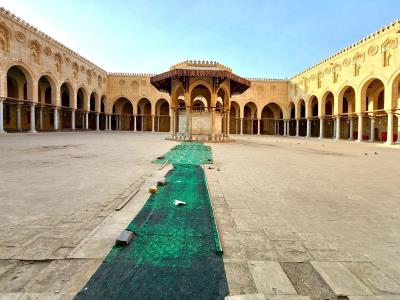
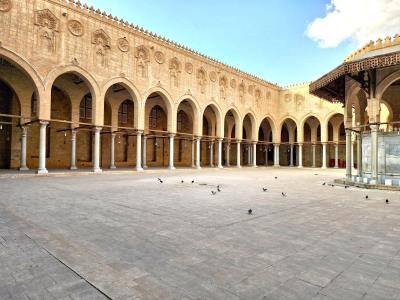
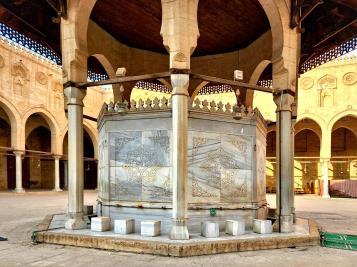
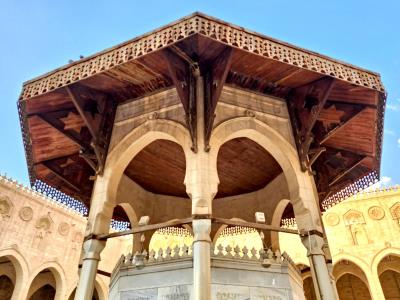
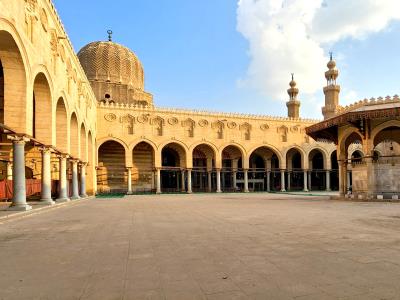
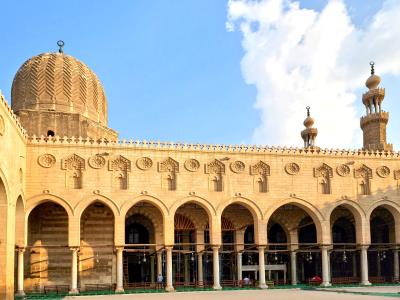
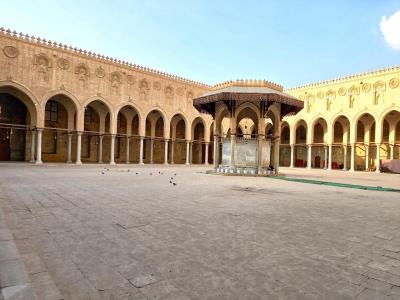
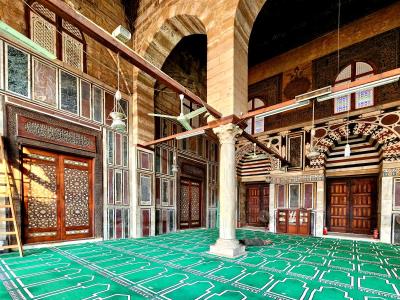
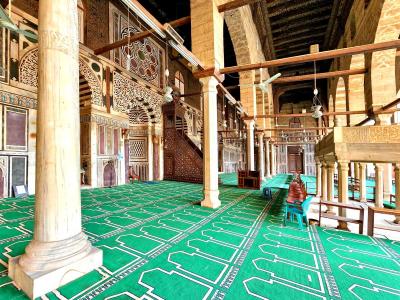
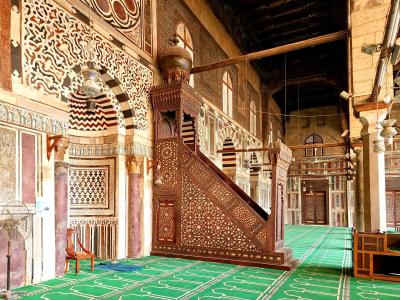
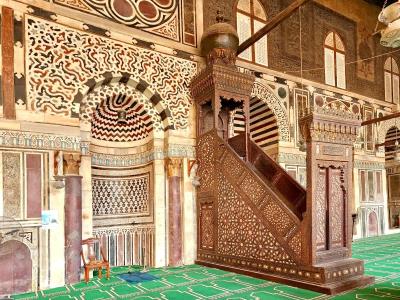
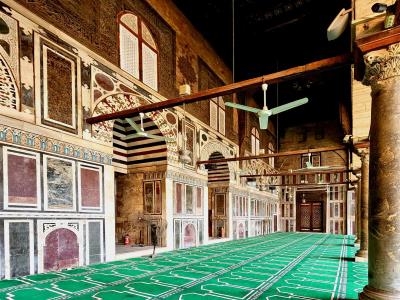
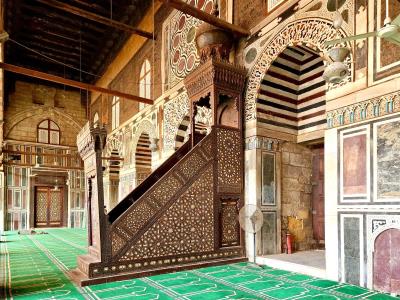
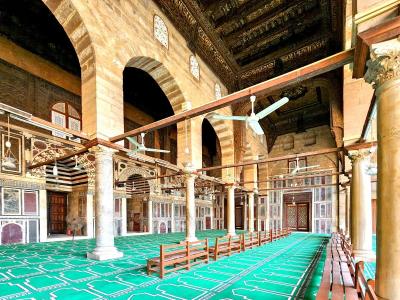
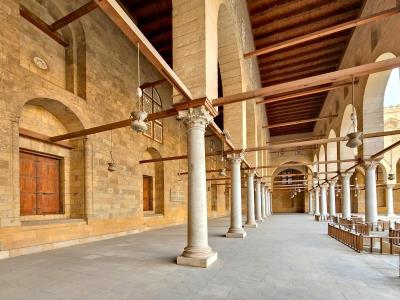
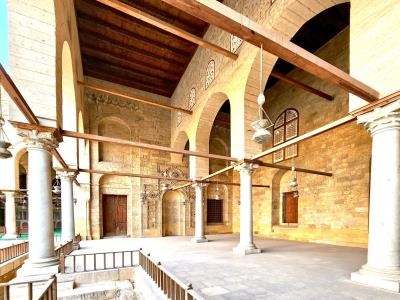
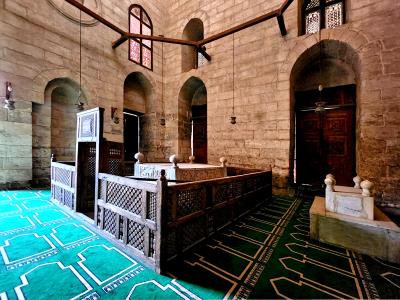
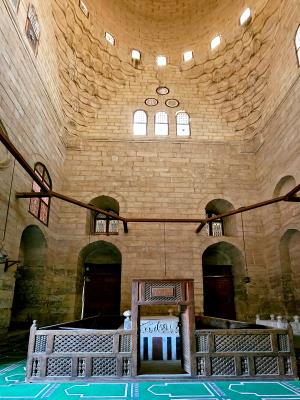
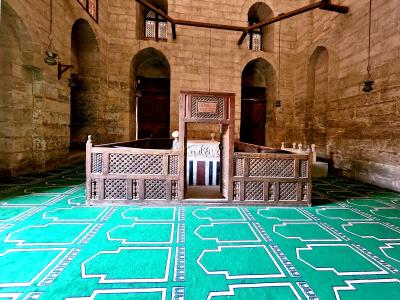
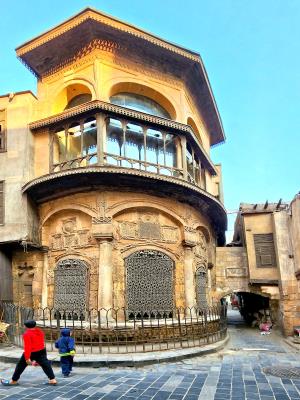
A Sabil is a public fountain.
Built in 1796. Of this building, only the facade, with its elegant bank of upper-story mashrabiya windows, is still impressive. Its rounded front is characteristic of a change in the outline of such monuments that was introduced about 1750.
Nafisa al-Bayda ('the white one') started her career as a slave. She was married first to 'Ali Bey, 'the mighty one of Egypt,' in the mid-1700s, then to Murad Bey, a Mamluk of the Qazdughli faction, who rose to power at the end of the eighteenth century.
Nafisa was a woman of beauty, wealth, charity, and great culture. During Murad Bey's resistance she acted as intermediary between him and Napoleon. She is the only female patron to have a monument survive on the main ceremonial way of al-Qahira. Her monument attests not only to her reputation as righteous and charitable, but to the fact that some women of the eighteenth century achieved great wealth through business investments in land and trade. In fact, she was one of the richest women of her period.
Souq El-Khaymiya
(Radwan Bek's Covered Market)
Khayamiya are elaborately patterned and colorful appliques applied to the interior of tents and serve a dual function of ornament and shelter. They are now made in Cairo and sold along a covered market known as the Street of the Tent Makers (Souq El-Khaymiya). This street, immediately south of BabZuwayla, has been in continuous use since the Malmuk era (1250 - 1517 AD).
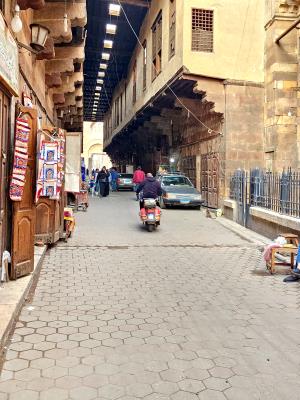
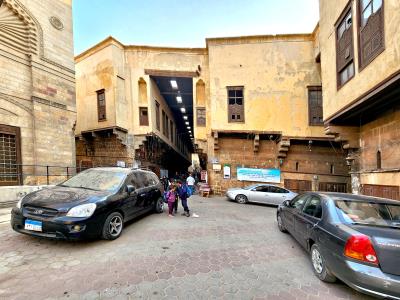
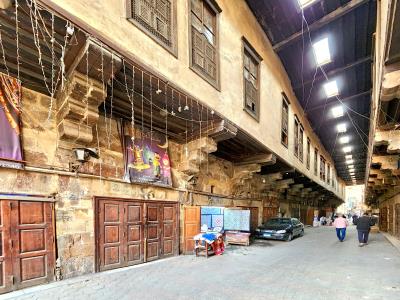
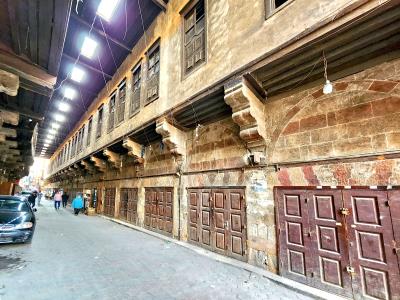
Al-Salih Tala'i Mosque
This mosque was built in 1160 and is one of the few buildings dating from the Fatimid period.
The Mosque of Al-Salih Tala'i', built by the Fatimid vizier Al-Salah Tala'i' in 1160 is one of the only remaining religious builduings dating from the Fatimid period (909 - 1171 AD). It is undergoing renovations.
